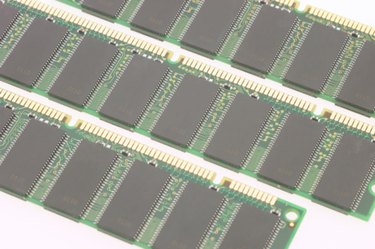
Computers use free hard drive space to supplement RAM (random access memory) when running programs. The computer uses something called a "Page File," where it stores data on the hard drive -- traditional or solid-state -- that would otherwise be stored in the computer's RAM. It uses the hard drive space as if it were additional system RAM. This technique can see a substantial performance boost by using a SSDD, instead of a traditional hard drive. However, using a SSDD for the page file will not increase performance or additional RAM.
Step 1
Left-click on the "Start Menu" icon on the taskbar, right-click on "Computer" and select "Properties."
Video of the Day
Step 2
Click on the "Advanced System Settings" option on the left side of the new window that opens.
Step 3
Click on the "Advanced" tab on the "System Properties" menu.
Step 4
Click the "Settings" option under the "Performance" header.
Step 5
Click on the "Advanced Tab" on the "Performance Options" window. Click on the "Change" button beneath the "Virtual Memory" header.
Step 6
Uncheck the box next to "Automatically manage paging file size for all drives" in the "Virtual Memory" window.
Step 7
Click on the SSDD from the listing under "Paging file size for each drive." If you are unsure which drive is the SSDD, left-click on the "Computer" option on the "Start Menu" and look for the hard drive with the smallest "free of..." capacity. The smaller drive will be the SSDD, if you also have a traditional hard drive installed in the computer.
Step 8
Click the dial next to "System managed size" and click on "Set."
Step 9
Click on "OK" to close the "Virtual Memory," "Performance Options" and "System Properties" windows.
Step 10
Choose the "Yes" option when the computer asks you if you want to restart.
Video of the Day